It began with an electrifying text message from a Yazidi member of a network dedicated to freeing Yazidis (an ancient people from Northern Iraq who adhere to a faith rooted in old Iranian religion and influenced by Sufi mysticism). The message was stark and simple, “We have a fourteen year old girl whose ISIL captor is willing to sell her for 17,000 dollars. Her name is Fayza Murad from the northern Iraqi town of Siber.” If we could get to Iraq with the required sum we could save one of the thousands of Yazidi girls who had been dragged off and sold into slavery by the ISIL fanatics who conquered their remote homeland in Northern Iraq in August of 2014. If we did not obtain the money there was a high probability that Fayza would never be seen again as the ISIL “Caliphate” was beginning to collapse under the assault of the Kurds, Iraqi Army and U.S coalition bombing.
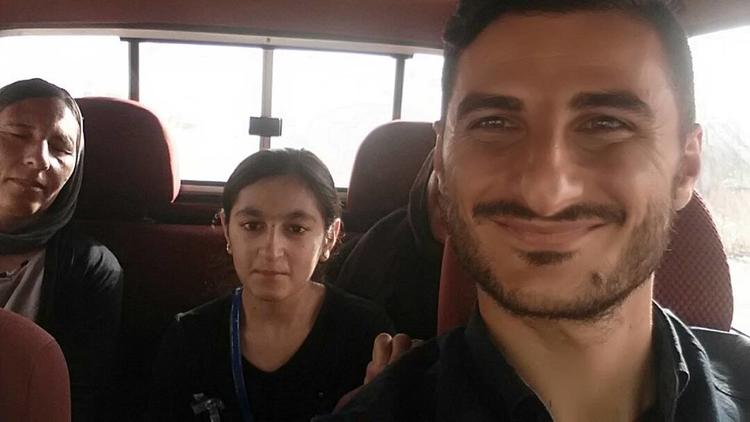
Thus began a frantic search for money that led myself and a brave group of multinational volunteers led by a fiery English woman named Anne Norona from the safety of our homes to the sprawling refugee camps in the burning deserts of Northern Iraq. For me it was to be the culmination of a long journey to explore the history of a dying people whose origins lay in the mists of time.
Lailish: An Entry into the World of a Dying People
My journey to comprehend this fascinating people that had endured on and off persecution for centuries by their Muslim neighbors who defined them as, “Devil worshippers” began while researching a history of America’s wars in Afghanistan, Iraq and Syria
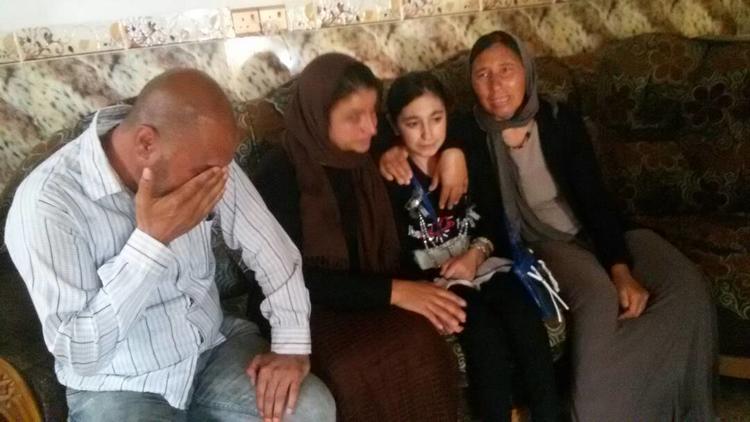
He enthralled me with stories of the ancient rituals of his people who the world gravely misunderstood as “pagans” and brought to life the epic story of his long persecuted people. It was this fascinating narrative that inspired me to travel Northward from our fire base at the newly recaptured Mosul Dam to the ancient heart of the Yazidis, their remote mountain temple located dangerously close to ISIL’s frontlines in Iraq. There I was provided with a rare opportunity to access a stone temple built in a bygone era and see Yazidis solemnly praying, dipping their hands in a sacred pool of Azrael, the Death Angel, and even given the extraordinary opportunity to meet their second highest priest, Baba Chavush. As I sat with this holy man who blessed myself and my fellow companion, Adam Sulkowski, he spoke of centuries of genocide as well as his hopes for peace for his people and all of humanity. With a gold peacock next to him, the peacock being a figure that represents the Yazidi’s primary god, Malak Tawus (The Peacock Angel) he lamented the fate of thousands of Yazidi girls who had been dragged against their will from their families into ISIL captivity and forgotten by an uncaring world.
I flew back to my own safe home in Boston feeling both blessed for having been given such a rare entry into the mystical world of one of the most ancient traditions in existence, but at the same time troubled by the pain in Baba Chavush’s voice as he described the unimaginable and horrific fate of Yazidi slave girls living in the clutches of their fanatical ISIL captors. Their story moved me to write articles about the
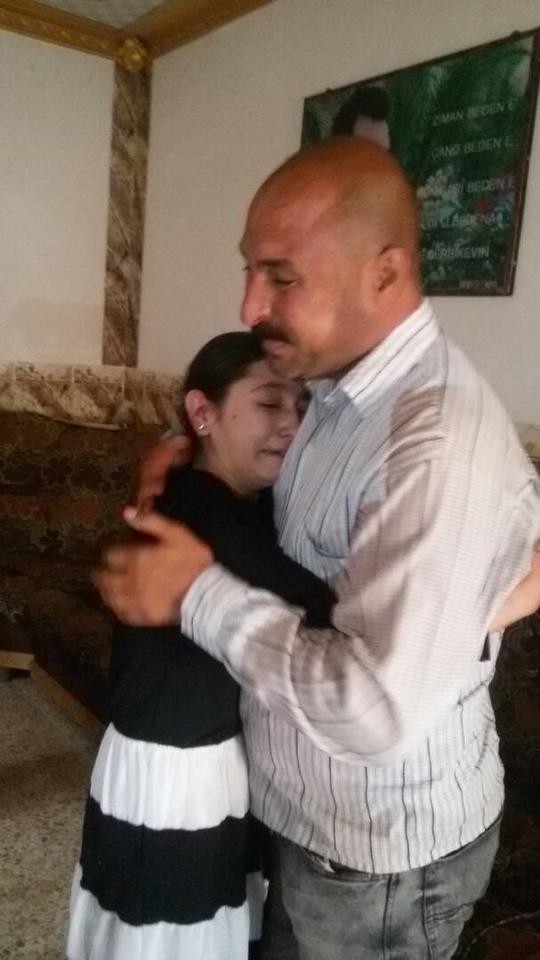
Little did I know there was, however, another person on the planet far braver than myself, who had decided that she would make that difference. It was my discovery of Anne Norona that was to take me from Boston and once again launch me into the maelstrom of the Middle East just as ISIL’s greatest triumph, Mosul, collapsed under the assault of a vast array of armies and militias bent on revenge.
Anne Norona. Single Mother, Nurse, and “Angel of Sinjar.”
Following my field research in the embattled mountains of Iraqi Kurdistan, I began to connect with a growing network of Yazidis who I had met on Facebook. They spoke of their dreams for the liberation of their homeland, a return from their refugee camps to their holy mountain haven, Mount Sinjar, and most painfully of the plight of thousands of daughters and sisters living as Sabbiya (Koran endorsed slave girls). I was even shown a horrific video some Yazidis had acquired of black clad, heavily armed, bearded ISIL fighters waving the black banner of Jihad and shouting “Allah u Akbar!” (God is Greatest) as they triumphantly dragged screaming girls as young as eleven from the pleading hands of their terrified mothers. I was nauseated when I heard that ISIL members considered raping “Pagan infidels,” to be an act of worship. I was moved by online interviews of members of this peaceful people who spoke of the horrors of enslavement by the men who had ritualistically slit the throats of their fathers and brothers, gunned down woman over the age of 40 in trenches and blown up their ancient temples with their priests still inside of them.
Some of the most impactful images I had ever seen in my life were of a
It was as I burned with a sense of helplessness, fury and desire to help that I received an unusual Facebook message from someone identifying herself as Anne Norona. Her initial messages were guarded and she wanted to know where my interests in the Yazidis came from. When I explained I was a Welshman/American who had dedicated his life to performing fieldwork amongst various persecuted ethnic minorities ranging from the isolated
It soon became apparent that Anne was a fascinating English globe roamer of the sort that had marched out and conquered much of the world and provided us such names as Lawrence of Arabia, Gertrude Bell (wonderfully played in a recent movie starring Nicole Kidman), and Dr. David Livingston (who disappeared in the depths of Africa in the 19th century). Anne similarly burned with the desire to get out into the world and help others, but instead of writing books and articles, as I did, she put boots on the ground and worked as a volunteer nurse in places ranging from Haiti to the Greek Island, Lesbos, located just off the Turkish coast. Having myself spent thirteen summers in Turkey living South of Lesbos with my ex-wife Feyza’s family in the beautiful costal village of Cesme, I had myself witnessed the flow of desperate Iraqi and Syrian refugees fleeing through Turkey in a desperate attempt to reach the Greek Isles and obtain asylum in the European Union. Lesbos was the frontline on the largest immigration of humans since World War II and tens of thousands of refugees were living in squalor in makeshift refugee camps on the island.
It was while Anne and a team of volunteers working as Health Point Foundation under Dr. Hadia Aslam in the medical tent in the city of Moria, in Lesbos that she came across her first Yazidis. Much of the volunteers work consisted of online communication between an amazing group of core humanitarians from around the world who worked tirelessly and remotely to ensure the refuges received help in every way, from legal to medical to boat rescue to basic assistance and supplies of food and clothes. These volunteers were doing the job that the big NGO’s were so negligently failing to do.
For Anne, a single mother who had run away from home as a rebellious teenager and explored much of the world from Africa to the Orient, her meeting with the Yazidis was in many ways a fulfillment of what the Arabs call kismet, “Fate.”
The Yazidis Anne encountered were different from all of the other Muslim Arab refugees in the Lesbos camps. They were physically smaller, were more shy, were often embarrassed to receive assistance and sadly faced continued persecution from Arab /Muslim refugees who mocked them by chanting “Allah u Akbar’’ or even attacked them. They had in many ways been deprived of much of the assistance going to the Arab /Muslim refugees as a result of their shyness and continued persecution. It was while working that it became obvious to Anne and her medical team, who she dubbed, “The Mosquitos” that the Yazidis needed special care and that is how Anne’s life was changed forever.
Anne and her then Yazidi counterpart and friend Shaker Jeffery became involved in the personal cases of Yazidis, realizing that they had the best of both worlds, Anne having all the contacts in Greece and Shaker all the Yazidi contacts. It was the perfect match. With this combination they were able to help cases, such as a young woman who urgently needed an eye operation to save her from certain blindness to finding emergency rescuers to help Yazidis petrified and surrounded by violent smugglers in Macedonia, to alerting the Greek coastguards when Yazidi boats were crossing the Mediterranean Sea and encountering difficulties.
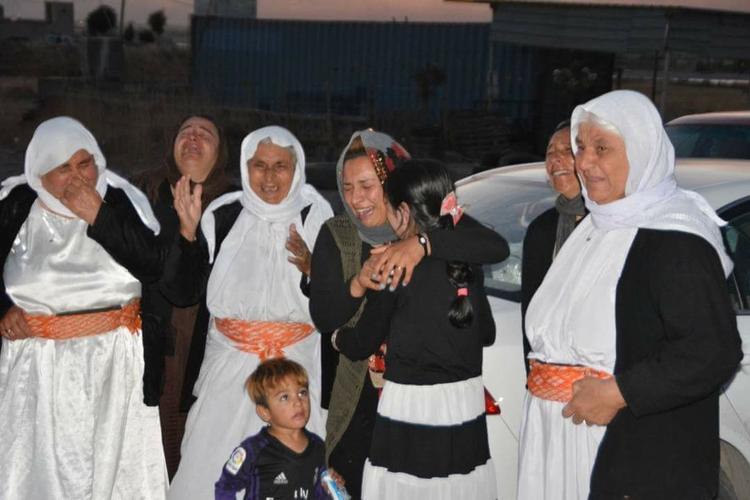
Anne’s instinct to side with the underdog and to fight in their corner propelled her determination to defend these much persecuted people. Ultimately, this burning sense of mission drove her to Iraq itself where she and a trusted team of Yazidi key workers and doctors who joined with her to provide emergency support to the most vulnerable in any given situation. She soon became known throughout the Yazidi community as someone to be contacted in moments of need and remained available 24 hours a day online. She would utilize ‘Crowd funders’ on Facebook to raise money for desperate cases, providing emergency assistance, for ISIL survivors, orphans and medical cases.
When Anne made her way back home to Britain, to her self constructed home which she calls “The Shed” situated in a flower covered field near the cliffs of Penzance in remote Cornwall, England, she continued her work to assist Yazidis in obtaining passports, supporting survivors and orphans, providing access to medical treatments, and on occasion even helping to free one of the poor Yazidi girls trapped in ISIL slavery.
While Anne would make desperate pleas for help online and among her local community her mission to provide multifaceted assistance to a people that found itself scattered in refugee camps far from their home and facing extinction went largely unnoticed by an uncaring world that was more interested in things like Donald Trump’s latest Twitter storm or Kim Kardashian’s weight gain.
Operation Fayza: A Mission to Free One Slave
The mission to free Fayza actually began in May of this year when I was carrying out fieldwork in Bosnia for the defense in a Federal terrorism case. It was at this time that Christopher Natola, one of my brightest students who had assisted me in writing my book Counter Jihad, suggested that I actually go to scenic Cornwall, England to meet Anne while I was in Europe. Spurred on by his words, I took a flight from Sarajevo to London (sadly arriving on the night of the terrorist attack on the pop concert in Manchester) and took a wonderful five hour train ride across England, down to the cliff side town of Penzance to meet the woman who so fascinated me.
I was welcomed at the train station overlooking a scenic bay and was driven by Anne to the famous “Shed” in her amazing garden. For a few days I did an “embed” with Anne and got to see her in action. Living with Anne was like being in the center of a one person global enterprise that saw her communicating via Facebook with Yazidis who had found asylum in Germany, members of her network in Iraqi Kurdistan trying to free a sex slave, hosting fundraisers in her local community, and in between taking time to tell me personal stories and showing me pictures of all of the Yazidis her and her network of “Mosquitos” ( As her team were called in their secret Facebook group) had helped.
Anne did all of this while single handedly raising a wonderful son and working as a nurse in a doctors surgery. I was in awe of her. Anne, a single English mother was making a difference in a world dominated by war, fanaticism, cynicism and apathy. Her story was almost Hollywoodesque in its beauty. Anne demonstrated that nothing is impossible, that one person can make a tremendous difference.
I flew home back to Boston inspired to tell her story and it was at this time that the now famous text message arrived, “We have a girl named Fayza, her ISIL captor is asking 17,000 dollars for her release or she will disappear into the burning black hole that is Mosul, Iraq.”
We needed money and we needed to get it to a smuggler, who would take most of the profits for going into the heart of darkness, to evacuate Fayza out of besieged Mosul. I was deeply touched by the fact that a young Yazidi girl who had the chance to be liberated had the same name as my former wife Feyza. I lost no time in contacting Feyza and she instantly offered her support to our cause. Together we collected funds to assist and with Feyza’s blessing and prayers for protection, I decided to join Anne and her team which included; K.P. a Canadian Sikh optometrist, Juliet an English woman from Devon and Baderkhan and Khairi, Yazidi friends and members of The Mosquitos.
In early June I flew from Boston to Erbil in Iraqi Kurdistan with the raised funds. There I reunited with Anne, who by now I had dubbed the “Angel of Sinjar” (Sinjar being the Yazidi’s sacred mountain). With Baderkhan and Khairi as our local guides, we drove northward parallel to the frontlines of the ongoing war with ISIL towards the northern town of Duhok. As Anne’s contact kept us updated by the hour, we waited anxiously to see if the money we delivered would actually free Fayza and reunite her with her family.
While we waited for news in 110 degree heat we visited various Yazidi refugee camps where we met with girls who had been recently liberated from slavery. There I watched as Anne, Juliet, and K.P. gave each girl several hundred dollars (A small fortune for these, the poorest and most traumatized of refugees who had returned from slavery with only the clothes on their backs).
Apart from those whom we met who had literally just escaped captivity, Anne knew all of her cases and their families intimately and was greeted with hugs and tears as she met with one Yazidi woman who had the sad fate of having lost her husband to ISIL and had suffered for 3 years with a prolapsed/herniated disc in her back with 11 children to care for and no way of making a living stuck in a tented camp in Kurdistan. Anne and her team went from tent to tent reuniting with people who had become well known to them. In the process, money was given to a woman who needed surgery, toys were given to children of a former ISIL slave, Anne met with UN High Commission for Refugees representatives to discuss a Canadian resettlement program and we all awaited anxiously for word on Fayza.
Then came the news we had been waiting for; the smuggler sent a triumphant cell phone photo of himself driving Fayza, who we had only seen in ISIL photographs nervously wearing a headscarf, being driven from Mosul to her parents in the refugee camp. At the last minute, the ISIL captor had lowered his demands and we had rescued Fayza from certain death in Mosul and reunited her with her family.
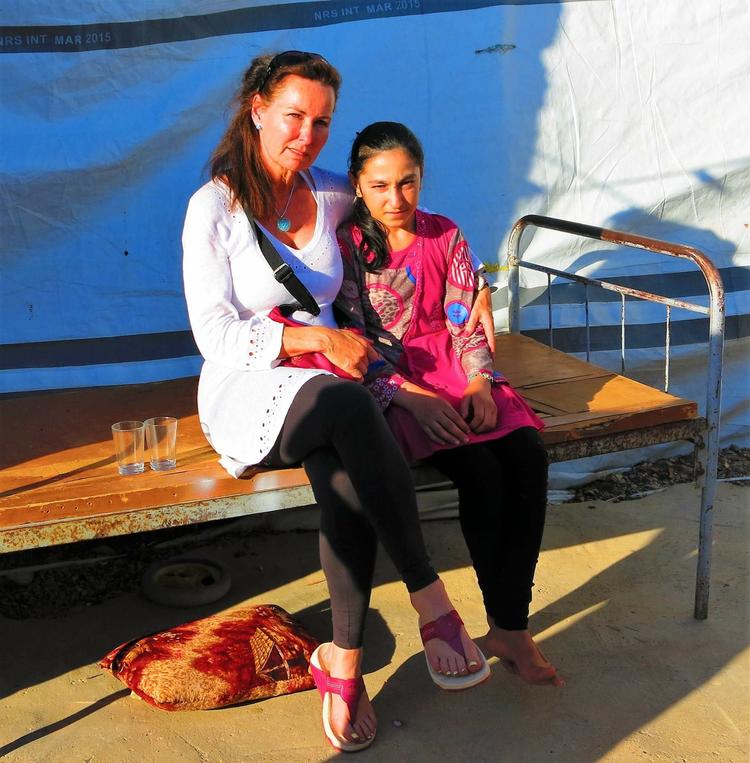
Anne Norona
The images of Fayza being embraced by her weeping father and her mother were for me in many ways a rare image of joy in a land defined by death, misery, fanaticism and slavery. Our team did not probe Fayza on her personal details or the horrors she experienced, it was not our place to do so. Sadly, there is rarely consistent psychological counselling for Yazidi girls or child soldiers freed from ISIL. Depression and post traumatic stress syndrome are sadly extremely common. We knew that their lives had been shattered and picking up the pieces would take many years, but we all took consolation in the fact that our small group had made a difference. One beautiful young Yazidi girl now had something that so many other sex slaves did not have, freedom and a chance to live her life. Although Fayza is now out of the reach of her ISIL tormentors, her future is still vaguely uncertain as she is living in tent 16 of the Chem Misko refugee camp amongst tens of thousands of fellow refugees in the town of Zacho. While it is difficult to know what sort of demons, nightmares or PTSD Fayza is suffering from, I took some consolation from the last imagine I saw of Anne enveloping Fayza in her loving arms and saving one more of her “Children”.
I am now safely back in Boston once more, and I guess some of my own demons and sense of guilt that long haunted me have been exorcised by the freeing of just one fourteen year old girl from the horrors of slavery at the hands of brutal terrorists. But I, like Anne, have been touched to my soul by the plight of the Yazidis, and particularly of those young girls still languishing in captivity. I cannot help but wonder how much more we Americans or Europeans would care if we had saved one American or British girl from slavery.
It is the images of Fayza sitting in Anne’s arms smiling at the camera, still in shock, that inspire me now to make this plea. If you have long felt that you cannot make a difference in the world, overcome your apathy and doubt in order to believe that you can. And you can start by reaching out to Anne and assisting her in her mission through funds, online activism, or who knows perhaps traveling to the wind swept deserts of sun blasted Northern Iraq to help one determined English woman save Yazidis… one person at a time.
To assist Anne please be sure to visit the following Facebook group page –
Brian Glyn Williams Full Professor of Islamic History at the University of Massachusetts Dartmouth and former lecturer at the University of London; http://www.brianglynwilliams.com
Christopher Natola Masters Degree in Education and currently studying for a Masters Degree in Homeland Security at Boston’s Northeastern University; https://twitter.com/Cnato14
]]>
